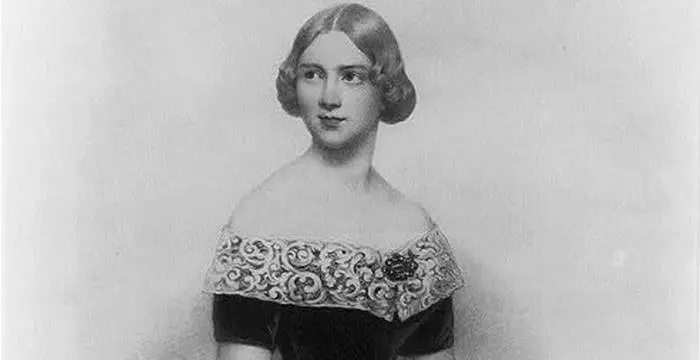Classical music has a rich and storied history, with female classical singers playing a crucial role. Their voices have brought life to operas, lieder, oratorios, and other classical music forms. This article explores the careers and contributions of some of the 8 most celebrated female classical singers.
I. Early Pioneers
Maria Malibran (1808-1836)
Maria Malibran was a Spanish mezzo-soprano known for her dramatic voice and intense performances. She became a sensation in Europe, performing in major cities such as Paris, London, and Milan. Malibran’s repertoire included works by Rossini, Bellini, and Donizetti, making her one of the leading opera singers of her time.
Jenny Lind (1820-1887)
Jenny Lind, known as the “Swedish Nightingale,” was a soprano whose pure voice and charming stage presence won the hearts of audiences worldwide. Her collaboration with the famous showman P.T. Barnum brought her fame in the United States. Lind’s repertoire included works by Mozart, Mendelssohn, and Verdi.
II. Golden Age Singers
Maria Callas (1923-1977)
Maria Callas, often referred to as “La Divina,” was an American-born Greek soprano who revolutionized opera with her dramatic interpretations and vocal technique. Her performances in roles such as Tosca, Norma, and Lucia di Lammermoor are legendary. Callas’s ability to convey deep emotion and her impeccable artistry made her a timeless figure in classical music.
Joan Sutherland (1926-2010)
Dame Joan Sutherland was an Australian soprano known for her incredible vocal range and agility. She specialized in bel canto operas, with roles in works by Bellini, Donizetti, and Rossini. Sutherland’s technical prowess earned her the nickname “La Stupenda,” and she became one of the most respected sopranos of her generation.
Leontyne Price (b. 1927)
Leontyne Price is an American soprano whose powerful voice and commanding presence have left an indelible mark on the world of opera. She was the first African American soprano to achieve international fame, breaking racial barriers in the process. Price’s interpretations of Verdi and Puccini operas are particularly celebrated.
III. Modern Icons
Renée Fleming (b. 1959)
Renée Fleming is an American soprano renowned for her versatility and luxurious voice. She has performed in a wide range of operatic roles and concert repertoire, from Mozart to contemporary composers. Fleming’s warmth and expressiveness have made her a beloved figure in both opera and concert halls.
Cecilia Bartoli (b. 1966)
Cecilia Bartoli is an Italian mezzo-soprano known for her dynamic stage presence and exceptional vocal technique. She has revived many forgotten works from the Baroque and Classical periods, bringing them to new audiences. Bartoli’s interpretations of Handel and Rossini are particularly acclaimed.
Anna Netrebko (b. 1971)
Anna Netrebko is a Russian soprano who has taken the opera world by storm with her powerful voice and charismatic performances. She has become one of the most sought-after sopranos, with a repertoire that includes roles in operas by Verdi, Puccini, and Tchaikovsky. Netrebko’s stage presence and vocal prowess have made her a modern-day opera superstar.
IV. The Art of Interpretation
The Role of Interpretation
The interpretation of classical music is an art form in itself. Female classical singers bring their unique perspectives and emotional depth to their performances, creating unforgettable experiences for audiences. Their ability to connect with the music and the audience is what sets them apart.
Emotional Expression
One of the key aspects of a great classical singer is the ability to convey emotion. Whether it is the sorrow of a tragic aria or the joy of a celebratory song, female classical singers excel in expressing a wide range of emotions through their voices. This emotional connection is what makes their performances so compelling.
V. Training and Technique
Vocal Training
The path to becoming a classical singer is rigorous and requires years of dedicated training. Female classical singers undergo extensive vocal training to develop their voices and master the techniques required for their craft. This training includes lessons in breath control, pitch accuracy, and vocal endurance.
Role Preparation
Preparing for a role in an opera or concert involves more than just learning the notes. Female classical singers must also study the character they are portraying, understand the historical context of the music, and work closely with conductors and directors to bring their performances to life. This comprehensive preparation is essential for delivering a convincing and powerful performance.
VI. Influence and Legacy
Inspiring Future Generations
Female classical singers have inspired countless young musicians to pursue careers in classical music. Their achievements and dedication serve as a source of motivation for aspiring singers. Many of today’s leading female classical singers cite the pioneers and golden age singers as their inspirations.
Cultural Impact
The contributions of female classical singers extend beyond the world of music. They have played significant roles in breaking down gender and racial barriers, promoting cultural exchange, and enriching the arts. Their impact on society is profound and lasting.
See Also: Valuing Soviet Era Classical Music on Vinyl
VII. Conclusion
The world of female classical singers is rich with talent, history, and artistry. From early pioneers like Maria Malibran and Jenny Lind to modern icons like Renée Fleming and Anna Netrebko, these remarkable women have shaped the landscape of classical music. Their voices continue to resonate, leaving an enduring legacy that inspires and captivates audiences around the world. The impact of their contributions goes beyond the stage, influencing future generations and making classical music accessible and relatable to diverse audiences. Their enduring influence and the timeless beauty of their performances ensure that their legacy will continue to inspire and enchant for years to come.

